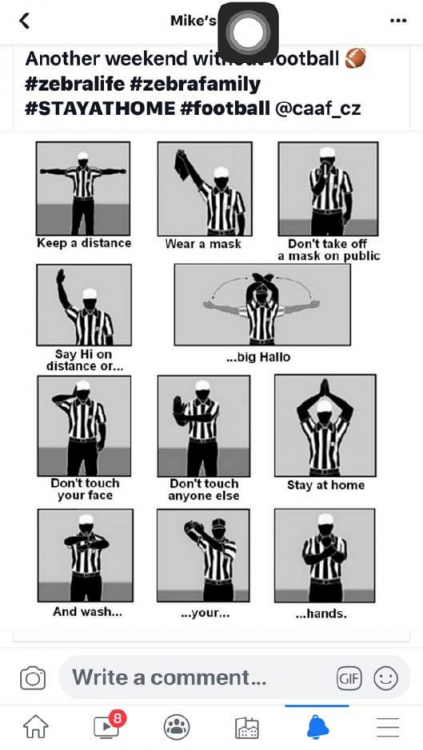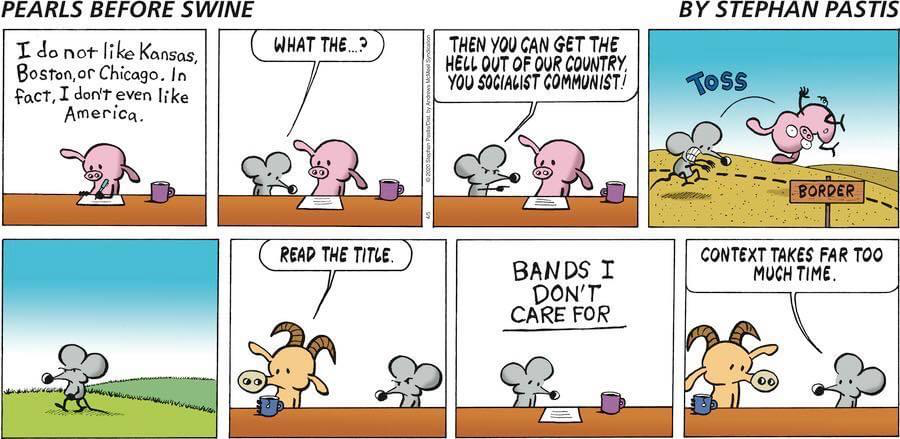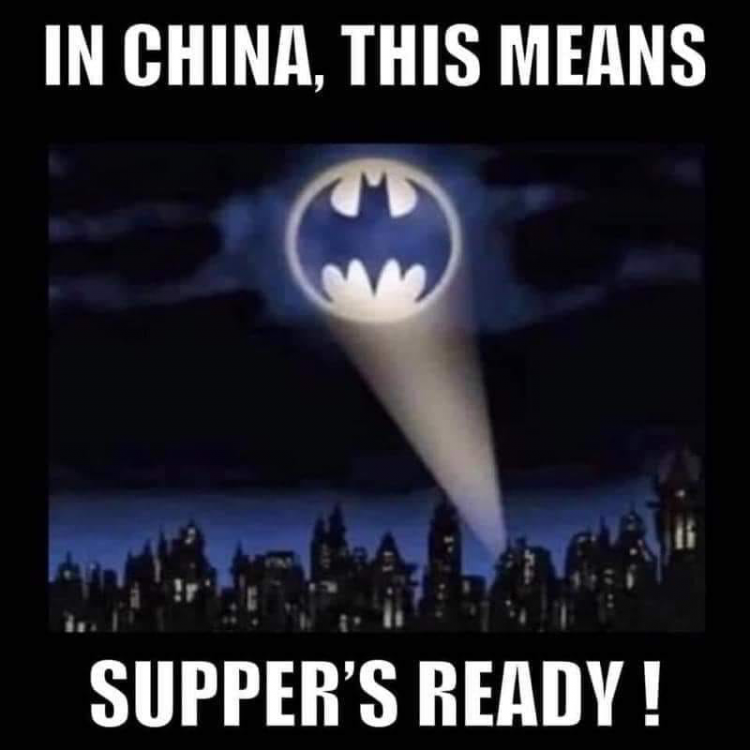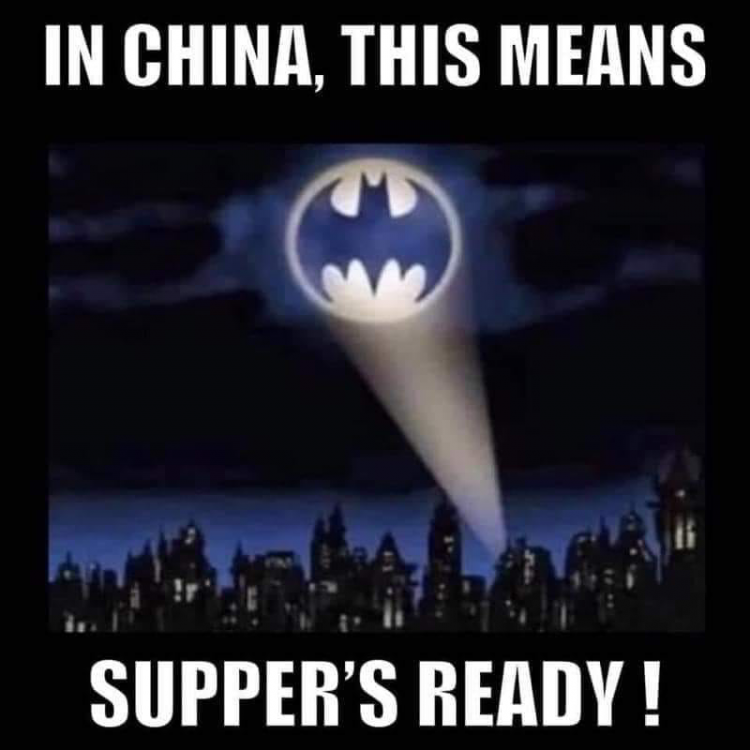-
Posts
6,217 -
Joined
-
Last visited
-
Days Won
260
Content Type
Profiles
Forums
Gallery
Store
Articles
Events
Everything posted by Bobref
-
There’s a lot of misinformation out there about treatments and vaccines. The fact is there won’t be drug treatment specifically designed to treat the disease, as opposed to the symptoms, in 2020, and a vaccine won’t happen for 12-18 mos. as a best case scenario. This article is a week old. https://www.healthline.com/health-news/heres-exactly-where-were-at-with-vaccines-and-treatments-for-covid-19 However, Dr. Anthony FauciTrusted Source, director of the National Institute of Allergy and Infectious Diseases, told reporters last week that a vaccine won’t be available for widespread use for at least another 12 to 18 months. This is the timeline to complete the phase III clinical studies. There’s no guarantee that the vaccine candidates will work. “There’s a lot of uncertainty with vaccine development,” Lee said. “Naturally, you have to make sure the vaccine is safe. But you also have to make sure the vaccine will elicit enough of an immune response.” Like drugs, potential vaccines have to pass through the same clinical trial stagesTrusted Source. This is especially important when it comes to safety, even during a pandemic. “The public’s willingness to back quarantines and other public-health measures to slow spread tends to correlate with how much people trust the government’s health advice,” Shibo Jiang, a virologist at Fudan University in China, wrote in the journal NatureTrusted Source. “A rush into potentially risky vaccines and therapies will betray that trust and discourage work to develop better assessments,” he said.
-

Corona and Fall Sports
Bobref replied to Hoosier Hawk's topic in The Indiana High School Football Forum
There is a 0% chance that an effective vaccine could be developed, mass produced, distributed, and administered in 2020. -

Corona and Fall Sports
Bobref replied to Hoosier Hawk's topic in The Indiana High School Football Forum
You may be right. There’s no way to know. But from a public health standpoint you have to hope for the best, but plan for the worst. Think of it this way: We have had a flu vaccine for many years, which does a very good job of preventing those 3-4 strains of the influenza virus that epidemiologists predict will pose the greatest risk that year. But it doesn’t prevent other strains of flu, and not everybody gets the shot. We haven’t practiced “social distancing,” or any of these other measures currently in force in order to address the flu. Every year in the US there are more than 30 million cases of the flu and a little over 30,000 deaths. Obviously, we don’t have anything like enough data to make final projections yet. But based on what we know now, the SARS-CoV-2 virus which causes the COVID-19 disease is at least twice as contagious as influenza and somewhere between 14 and 23 times as likely to kill you as the flu. There’s no vaccine and if we have one in the next 12 months it will be nothing short of a miracle. WAKE UP! Social distancing and sheltering in place-type restrictions are the only thing that is saving us from numbers like 50 million infected and a million deaths! -

Corona and Fall Sports
Bobref replied to Hoosier Hawk's topic in The Indiana High School Football Forum
The comparison is inapposite. The “flu” is actually several different viruses. The annual flu shot actually addresses only 3-4 of those — the ones epidemiologists believe will be most prevalent. So, getting the flu after having a flu shot is not only possible, it’s relatively common. That would not happen with a COVID-19 vaccine, which would be targeted to that specific virus. There is another reason the comparison is apples to oranges. COVID-19 is much more contagious than the flu. The degree of “contagiousness” of a virus is measured by its basic reproduction rate or RO (“R naught”): the average number of people who catch the disease from a single infected individual. The RO for most strains of influenza is about 1.3 i.e., flu victims infect 1.3 other people. They haven’t arrived at a final RO for COVID-19 yet, but it’s going to be somewhere between 2 and 3, meaning this virus is likely to be at least twice as contagious as the flu. The third reason the comparison is unhelpful is that this disease is much more severe than the flu, potentially. The US death rate from influenza is about 0.1%. We don’t have a firm handle on the death rate from COVID-19 yet, but the published studies so far place it somewhere between 1.4% and 2.3%, meaning it’s 14 to 23 times more lethal than the flu. Looking at COVID-19 the same way you look at the flu is of very limited use, and potentially, very dangerous. -

Corona and Fall Sports
Bobref replied to Hoosier Hawk's topic in The Indiana High School Football Forum
A vaccine anytime before next Spring is an unrealistic hope. Has nothing to do with the FDA. It takes at least that long to actually do the work. https://www.newyorker.com/news/news-desk/how-long-will-it-take-to-develop-a-coronavirus-vaccine -

Corona and Fall Sports
Bobref replied to Hoosier Hawk's topic in The Indiana High School Football Forum
What makes you think they’re not? -
As I said. Haters gonna hate.
-
Haters gonna hate.
-

You Make The Call - Offense or Defense?
Bobref replied to a topic in The Indiana High School Football Forum
If you’re looking at strictly economic value, offensive tackles seem to do better monetarily than their defensive counterparts. There are 12 offensive tackles making at least $13 million annually in the NFL. All but 2 are left tackles. There are only 2 defensive tackles making that much. Now, if you happen to be a DE, that’s different, principally because edge rushers are in that category. There are 17 DE’s in the NFL making at least $13 million a year. Moral of the story: OTs are more valuable than DTs. So, if that’s your choice, play offense. But if you can rush the passer, that changes the equation significantly. -

Corona and spring sports
Bobref replied to gopher2's topic in The Indiana High School Football Forum
Since the regular season is just exhibition games anyway, why not just start with the tournament ? -

Best HS Football Team in Indiana History?
Bobref replied to MICFan34's topic in The Indiana High School Football Forum
Between me and Penn, I think we’ve destroyed all copies of the video. 😅 -

Best HS Football Team in Indiana History?
Bobref replied to MICFan34's topic in The Indiana High School Football Forum
Our crew had 5 straight games in the playoffs that year decided inside of the last minute of the game. Then, when we got to the BIG game ... I spent most of the afternoon watching the back of Desmond Tardy’s jersey receding rapidly in the distance. -
I remember his dad well. Saw him demolish Hobart in the Brickie Bowl one night many years ago. What kind of grades does he have?
-
I’m not saying they shouldn’t try. After all, that’s what trials are for. But even this limited study did not involve severely ill patients. Just saying don’t get your hopes up yet, because it’s unproven. And there is no logical justification for employing widespread use of a treatment that has not been proved to patients who are not severely ill.
-
Here is the most important language in the story: “it was posted at medRxiv, an online server for medical articles, before undergoing peer review by other researchers.”(emphasis supplied) One of the key principles of scientific research is that results aren’t valid unless they can be reproduced in other trials. Until then, any conclusions are premature.
-
To be honest, this issue is better handled by @JustRules, since he is much more familiar with the umpire position than I. Umpires are often involved in this call.
-

What We Can Learn from MLB
Bobref replied to Bobref's topic in The Indiana High School Football Forum
I always enjoy seeing my two primary pursuits - litigation and sports - collide. This interesting article appeared in the recent issue of The Business Suit, the publication of the Commercial Litigation Section of the Defense Research Institute. Did you bet on fantasy baseball in 2017? Do you bet on any professional sports? You’ll definitely want to read this. If You Ain’t Cheating, You Ain’t Trying The Intersection of Fantasy Sports and Pitch Sign Stealing By Gregory Farkas Daily fantasy sports generated over $355 mil- lion in revenue in 2019. Given the size of the industry, it is not surprising that it has gener- ated litigation. Recently, such litigation has spilled over to professional sports franchises and leagues, as DraftKings fantasy baseball participants sued the Houston Astros, Boston Red Sox, and Major League Baseball over baseball’s sign-stealing scandal. In January, Major League Baseball fined the Astros $5 million, took away its first-round draft picks through 2021, and suspended the team’s general manager and field manager for using cameras to steal their opponents’ pitch signs during the 2017 season. Infamously, the stolen pitch signs were then sent to batters by banging on a trash can. The Red Sox were also caught using smart watches to send signals to their dugout in 2017 and are awaiting discipline from Major League Baseball. In Olson v, Major League Baseball, No. 1:20-cv-00632 (S.D.N.Y.) the plaintiffs, a group of DraftKings daily fantasy baseball participants, are pursuing a putative class action against the Astros, Red Sox, and Major League Baseball alleging claims for unfair and deceptive practices under state consumer protection statutes, unjust enrichment, and negligence. The suit contends that the pitch sign stealing undermined the plaintiffs’ daily fantasy wagers. It stresses the close relationship between Major League Baseball and DraftKings. Major League Baseball was the first professional sports league to partner with DraftKings in 2013, including ballpark and online promotions. Major League Baseball also acquired an equity interest in DraftKings that it later sold. The plaintiffs claim that the financial relationship between Major League Baseball and DraftKings created a duty to DraftKings participants to ensure that all games were played fairly. Major League Baseball, the Astros, and the Red Sox have predictably challenged both the existence of such a duty and the plaintiffs’ ability to prove that the cheating caused them financial damages. But the defendants also are relying on another argument that might seem to be foul to sports fans. The defendants contend that everyone is aware that professional athletes cheat, and therefore the plaintiffs could not have been deceived into participating in DraftKings. In making this argument, the defendants noted that clubs were publicly disciplined for electronic sign-stealing violations during the 2017 regular season. The defendants also rely on precedent from another infamous cheating incident, the New England Patriots Spygate scandal, where a disgruntled New York Jets season ticket holder (and one can question whether there is any other kind) sued the Patriots, their coach, and the NFL. The Third Circuit affirmed dismissal of the claims, finding that sports fans understand that “players often commit intentional rule infractions in order to obtain an advantage over the course of the game.” Mayer v. Belichick, 605 F.3d 223, 236 (3d Cir. 2010). The plaintiffs in Olson face an uphill climb to prove that they were directly damaged by the sign-stealing scandal and that Major League Baseball and the teams involved owed them any legal duty. However, with the popularity of daily fantasy sports and a 2018 United States Supreme Court decision paving the way for states to legalize sports gambling, the likelihood of on the field cheating leading to off the field litigation is likely to increase. The Business Suit | Volume 24, Issue 110 Commercial Litigation Committee http://dri.org/docs/default-source/webdocs/newsletters/2019/the-businesssuit_volume_24_issue_1.pdf?sfvrsn=2 -

“Best” Play You Ever Saw?
Bobref replied to Bobref's topic in The Indiana High School Football Forum
I saw that one live and it was unbelievable! Love the officials’ garb. Note that the R is wearing an adjustable band cap in a state championship game. And the line judge was tragically late to the goal line on the TD. -

“Best” Play You Ever Saw?
Bobref replied to Bobref's topic in The Indiana High School Football Forum
As I thought more about it, I believe the play was actually wiped out by offsetting penalties ... one of which was Zachery grabbing the receiver’s facemask with his free hand as he was coming down with the ball in his other.









